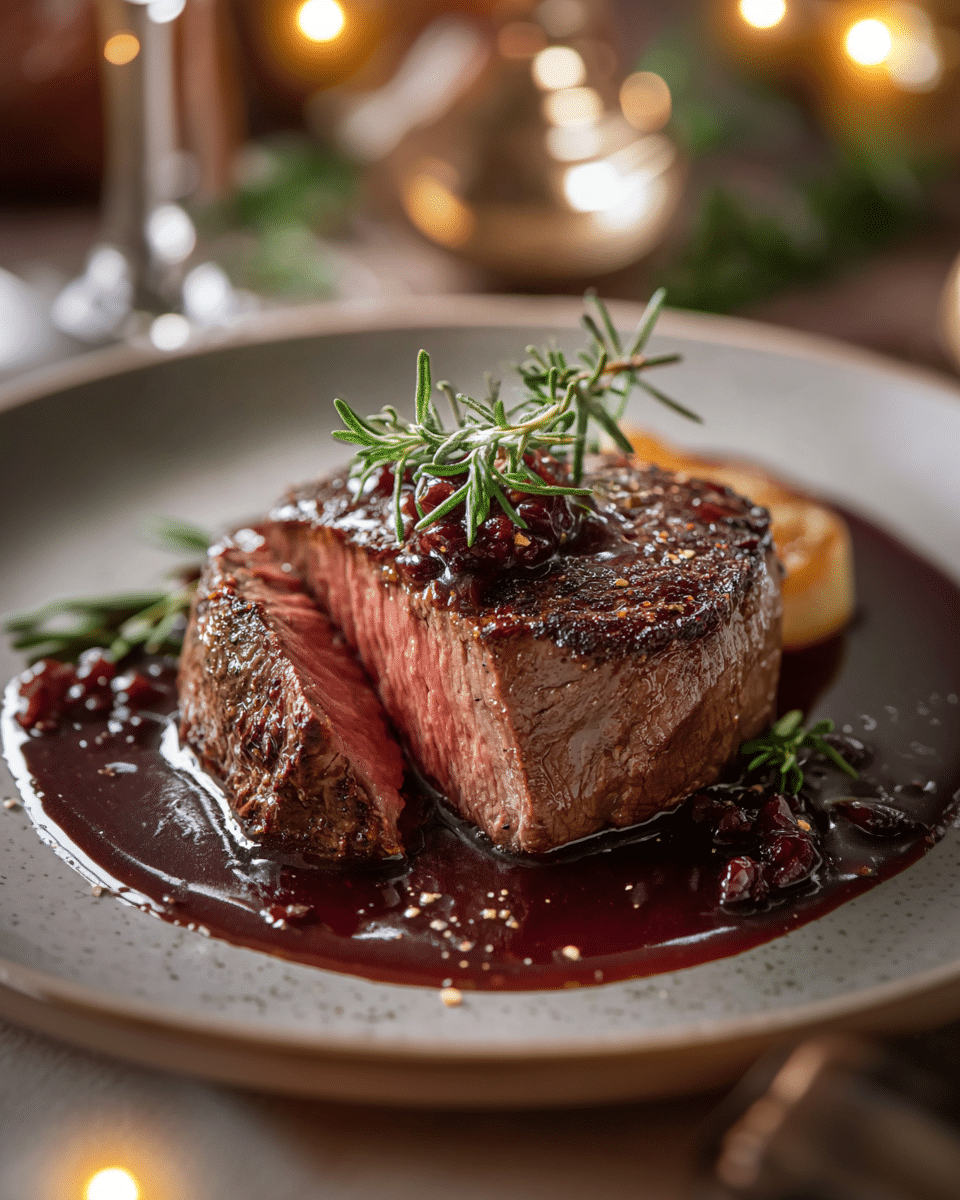This elegant dish of pan-seared filet mignon, served with a rich red wine reduction sauce, is perfect for intimate dinners or special occasions. The steak is cooked to tender perfection with a crispy crust, while the red wine sauce—infused with shallots, beef stock, and a hint of balsamic vinegar—adds a luxurious, savory finish to the dish. Simple yet sophisticated, it’s a celebration of fine cooking and impeccable timing.
Full Recipe:
Ingredients
For the Filet Mignon Steak:
-
2 filet mignon steaks (6 oz each, about 1.5–2 inches thick)
-
1 tablespoon olive oil
-
1 tablespoon unsalted butter
-
2 sprigs fresh thyme
-
2 garlic cloves, smashed
-
Kosher salt, to season
-
Freshly cracked black pepper, to season
For the Red Wine Sauce:
-
1 small shallot, finely minced
-
1/2 cup red wine (Cabernet Sauvignon or Pinot Noir recommended)
-
1/2 cup beef stock (low sodium)
-
1 teaspoon balsamic vinegar
-
1 tablespoon cold unsalted butter (for mounting)
-
Salt and pepper, to taste
Directions
-
Prepare and Cook the Filet Mignon:
-
Pat the steaks dry and season generously with salt and pepper. Let them rest at room temperature for 30 minutes.
-
Heat olive oil in a heavy skillet over medium-high heat. Once shimmering, add the steaks and sear for 3–4 minutes per side until a rich crust forms.
-
Add butter, smashed garlic, and thyme to the pan. Tilt the pan and use a spoon to baste the steaks for 1–2 minutes.
-
Transfer the steaks to a wire rack and let them rest for 5–7 minutes. Internal temperature should read 130°F for medium-rare.
-
-
Make the Red Wine Sauce:
-
Pour off excess fat from the skillet, then add the shallots and cook over medium heat until softened (about 1 minute).
-
Pour in the wine, beef stock, and balsamic vinegar, scraping up browned bits from the pan. Bring to a simmer and reduce until the sauce coats the back of a spoon, about 10 minutes.
-
Lower the heat and whisk in cold butter. Taste and season as needed. The sauce should be glossy and savory with a slight acidity.
-
-
Plate and Serve:
-
Slice the rested filet mignon into medallions and fan them across a warm plate.
-
Spoon the red wine sauce underneath or alongside the steak. Garnish with microgreens or a roasted shallot for added drama.
-
Serve immediately and enjoy the richness of the dish.
-
Nutrients
-
Calories: 520 per serving
-
Protein: 47g
-
Carbohydrates: 5g
-
Fat: 35g
-
Sodium: 550mg
-
Cholesterol: 125mg

